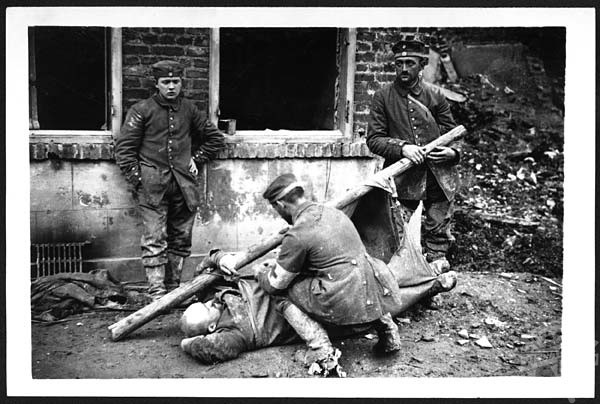
By Alex Jones
REMARKABLE 100-year-old photos show the brave men, of all nationalities, and animals who risked their lives to rescue the wounded from No Man’s Land.
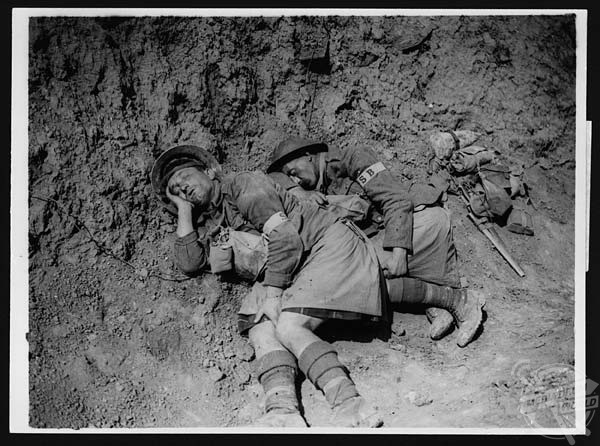
Powerful images, from the National Library of Scotland collection, show horses pulling empty medical stretchers across waterlogged track as they trudge back to the front line; a stretcher bearer offering frantic first aid to a seriously injured Highlander in a mud-filled trench; and German prisoners of War carrying injured British troops out of the heat of battle.
Another fascinating shot shows severely wounded troops loaded on to a light railway to rush them away from the front line to receive more professional medical help.
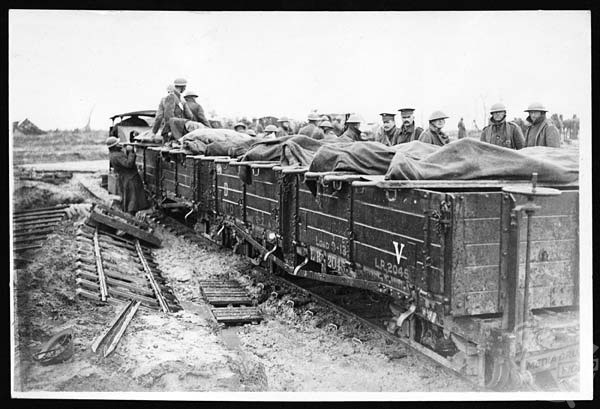
During the First World War, advancing troops were not allowed to stop and care for wounded soldiers. All men carried an emergency field-dressing and if possible attempted to treat their own wounds. The wounded soldier then had to wait until the stretcher-bearers arrived.
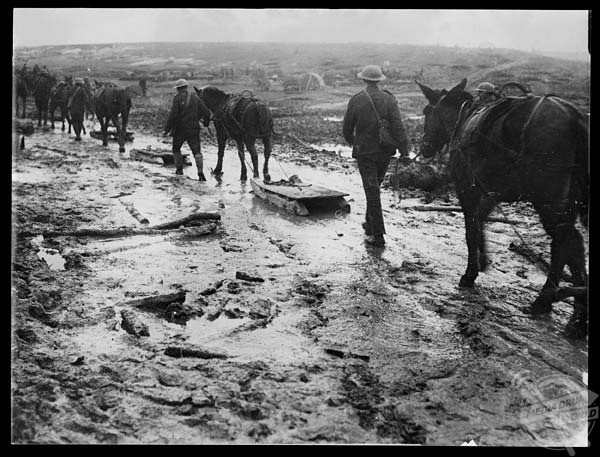
There were only four stretcher-bearers assigned to one company (about 120 men). If the underfoot conditions were good, two men could carry a wounded soldier on a stretcher. In muddy and rainy conditions, however, it took four men to lift a stretcher. The stretcher-hearers carried wounded men to a regimental first aid post in the reserve trenches. After receiving treatment there, he would then be taken to a Casualty Clearing Station for surgery, before being transferred to a proper military hospital.
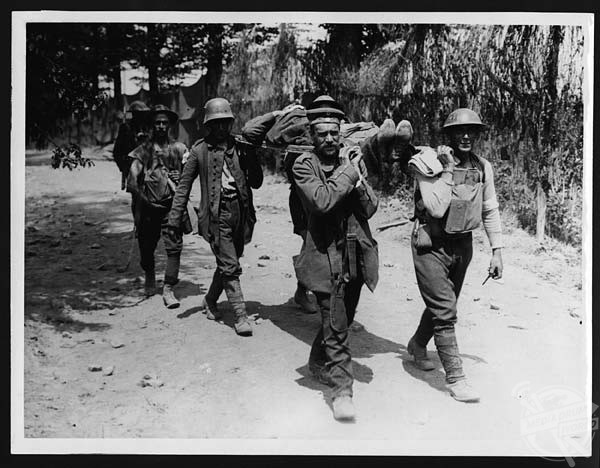
As there were only a limited number of stretcher bearers, wounded soldiers would often have to wait for some time to receive the medical attention they urgently required. Some dragged themselves into a shell-hole for protection, but this was dangerous as many sank into the mud and drowned. One man with a broken thigh spent two days dragging himself backwards with his hands, until he reached his own trenches. Another soldier who had been shot in the chest, lasted eleven days in No Man’s Land before the stretcher-bearers found him.
The grim task was often assigned to German prisoners of war, still under armed guard. This allowed British soldiers’ activity to be concentrated on duties at the Front as well as keeping the vast body of prisoners occupied.






